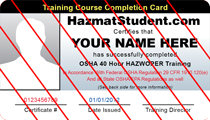| When the Dust Settles | Occupational Lead Exposure |
Occupational lead exposure can occur in most industries, including transportation, construction, and manufacturing. OSHA estimates that approximately 838,000 workers in construction and 804,000 workers in general industry are potentially exposed to lead. This lead exposure typically happens during the use, production, maintenance, recycling, and disposal of lead products and materials.
Lead exposure often occurs through the unintentional inhalation of lead dust or fumes in the workplace. Also, lead dust on contaminated hands, clothes and other surfaces can easily be transferred and ingested as a worker eats, drinks or smokes.

Workers exposed to lead may feel perfectly healthy and my not realize they are in danger. However lead accumulates in the body over time and the exposures can cause irreversible neurological and gastrointestinal damage, kidney disease, anemia, and more.
Though OSHA requires construction and general industry employers to protect workers from harmful lead exposure, workers should be aware of possible early symptoms of lead overexposure and seek medical attention if they are concerned. Early symptoms may include:
- Stomach cramps or aches
- Muscle pain
- Joint Pain
- Difficulty concentrating
- Irritability
- Fatigue
It’s important for workers to know that lead dust can settle on your hands, hair, and clothes without your knowledge. There are several easy ways to help protect yourself from lead exposure:
- Talk to your employer to ensure they have taken the needed steps to prevent lead overexposure. Where applicable, ensure your company is testing the air and worker blood-levels to monitor the hazard level.
- Eat, drink, and smoke only in areas where lead dust and fumes would not be present. Wash your hands prior to eating, drinking, or smoking.
- Shower and change clothes and shoes at work, prior to going home, if possible.
- Keep work clothes and personal clothes separated. Leave your work clothes at work and have them washed there. Keep clean clothes in an area where they won’t be contaminated.
- Use the proper protective clothing and equipment when needed to prevent lead exposure.
- Use the proper methods to remove lead dust from work areas in order to avoid broadcasting the dust further.
For more information on protecting yourself from lead exposure, see OSHA’s Lead Safety and Health Topic. We also offer a 100% Online Lead Awareness for General Industry Course which can be taken as Initial or Refresher training.



